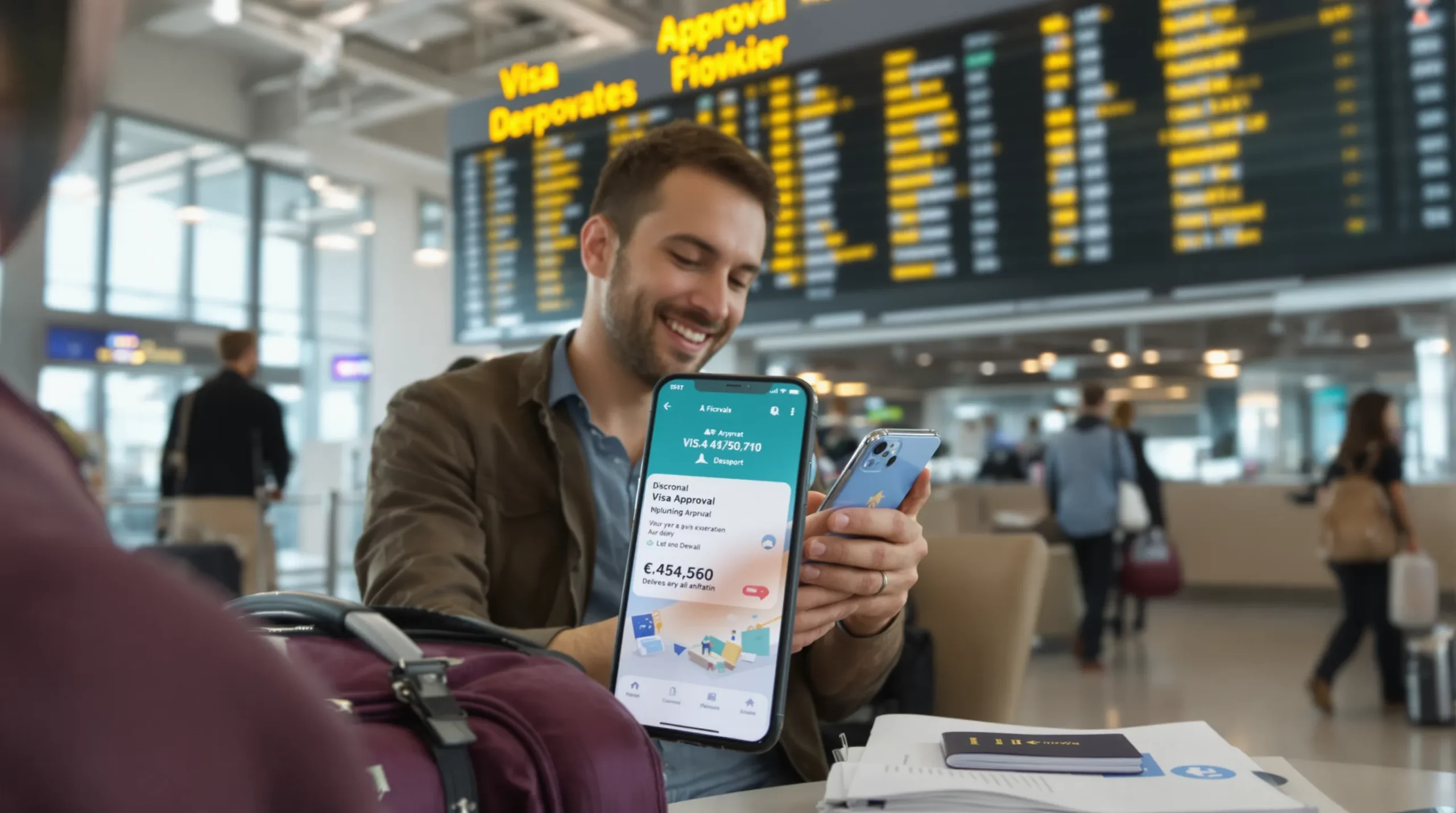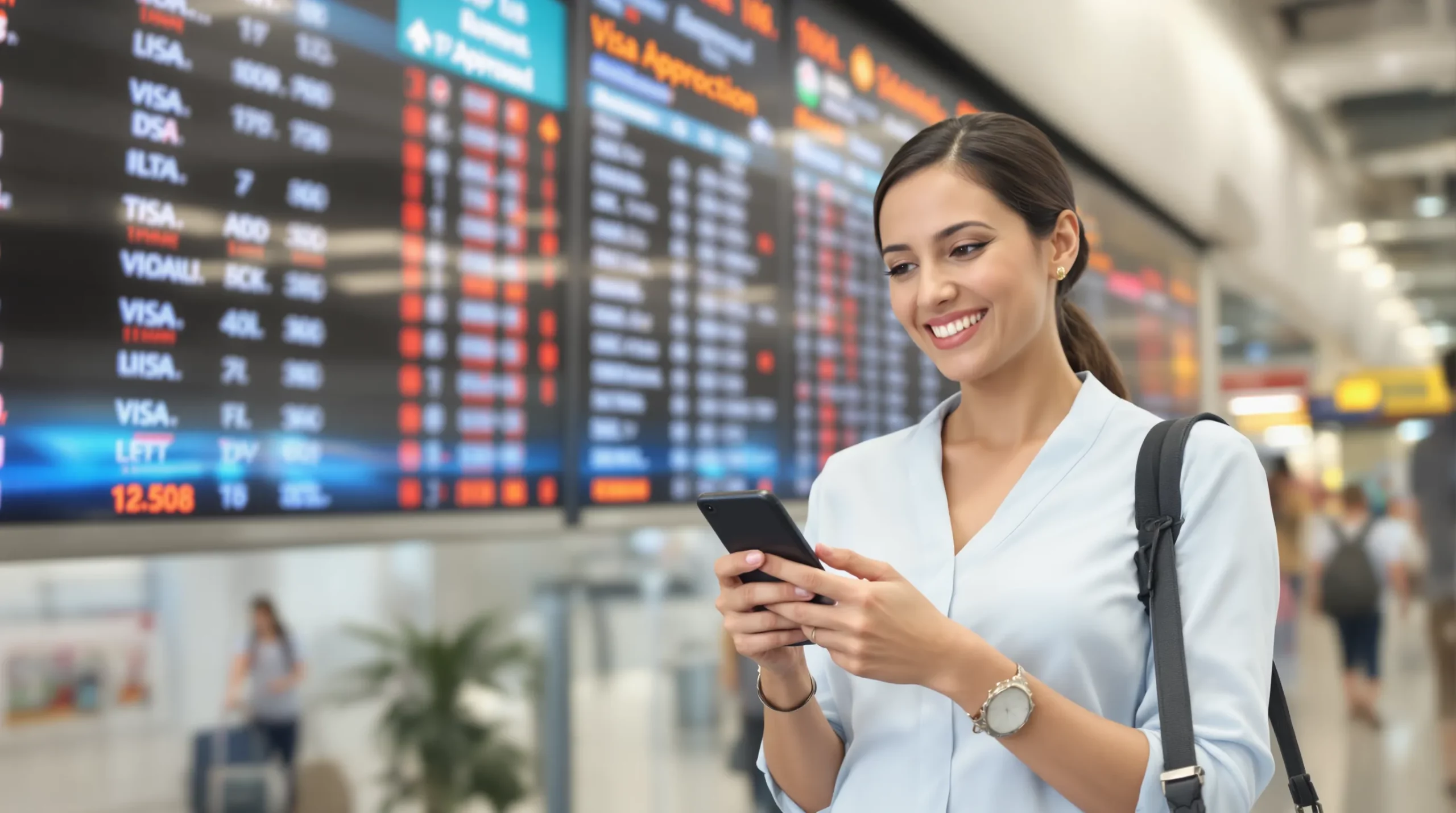Building a Seamless Post-Booking Visa Journey: Tools & Templates

Why the “post-booking” moment matters more than you think
A traveler has just clicked the Pay Now button. Flights or tours are confirmed, confirmation e-mail sent—job done, right? Not quite. According to IATA’s 2024 Global Passenger Survey, 64 % of international flyers say handling travel documents after purchasing a ticket is the most stressful part of a trip. Missed visas remain the No. 1 cause of denied boarding incidents for non-EU carriers, costing airlines an estimated US $2.1 billion in compensation and reprotection every year.
For OTAs, tour operators and even ground handlers, the hours and days that follow a booking are therefore a gold mine for both customer experience and ancillary revenue. If you can guide passengers through border formalities—ideally without forcing them to leave your ecosystem—you remove friction, improve NPS and open a brand-new revenue stream.
This guide breaks down:
- The anatomy of a seamless post-booking visa journey.
- Ready-to-use communication templates (e-mail, SMS, in-app).
- Tooling options: from no-code widgets to fully automated APIs.
Internal examples are based on SimpleVisa, but the framework applies to any visa management platform.
1. Mapping the post-booking visa journey
Below is a minimalist flow you can adapt to your business model. The entire loop should fit inside a 10-day window for leisure travel and inside 72 hours for last-minute or business itineraries.
-
T + 0 — Booking confirmation
- Display a contextual banner: “Do you need a visa for Qatar? Check now.”
- Capture passport nationality and trip purpose if not already in the PNR.
-
T + 1 — Document assessment
- Auto-match PAX nationality, destination and transit airports against live visa rules.
- Output: “Visa not required”, “ETA needed”, “eVisa recommended”, or “Consular visa—assist”.
-
T + 2 to T + 5 — Application & payment
- Passengers complete a short dynamic form (photo upload, travel dates) under your brand.
- Collect government fees + service fee in one transaction.
-
T + 6 to T + 9 — Processing & status alerts
- Push real-time updates by webhook or e-mail: Pending security check, Approved, Docs missing.
- Allow travelers to upload extra files straight from their phone.
-
T + 10 — Delivery & pre-departure check-in
- PDF eVisa delivered + machine-readable code injected into PNR (for DCS verification).
- Suggest add-ons (lounge, insurance) now that travel certainty is higher.
Pro tip: For multi-country trips, treat each segment as a separate sprint. Automate what you can, but flag complex visas (e.g., China work permits) to a human agent early.
2. Communication templates that convert
The best tools are useless if travelers ignore them. Below are battle-tested snippets you can copy-paste or tweak.
2.1 Confirmation page banner (web or app)
Action required for your Bali trip
Indonesian authorities often issue eVisas in under 48 hours. Start your application now and avoid airport queues.
Begin visa check
Psychology: urgency + convenience. The CTA uses a verb (“Begin”) and avoids travel-jargon like “border compliance”.
2.2 E-mail D+1 (if visa status unknown)
Subject: Visa check for your upcoming trip ✈️
Hi {{first_name}},
According to your booking, you’ll land in Denpasar on {{date}}. Most travelers need an eVisa on Arrival to enter Indonesia.
In 3 minutes you can:
- Verify if you’re exempt.
- Complete the official form.
- Receive the QR code by e-mail.
Start here → {{smart_link}}
Need help? Our visa experts are available 24/7 on WhatsApp.
Safe travels!
{{Brand}}
2.3 SMS nudge (D+5, eVisa not started)
Reminder: the visa for your Mexico trip takes up to 24 h to approve. Apply today to avoid last-minute stress: {{short_link}}
Why SMS? 97 % open rate within 15 minutes (Twilio, 2025).
2.4 Approval push notification (in-app)
🎉 Your Vietnam eVisa is approved. We’ve saved a copy under “My Documents”.
Add a subtle cross-sell: “Roaming data plans from $4/day”.
3. Choosing the right tooling stack
Travel brands vary in tech maturity. Below is a quick decision tree:
| Requirement | Tooling option | Dev effort | Typical go-live |
|---|---|---|---|
| You need something tomorrow, no engineers available | White-label app (SimpleVisa Hub) | 0 | 24 h |
| You want the journey inside your booking flow | Web widget / iFrame | <3 days | 1–2 weeks |
| You run a custom mobile app and loyalty program | SDK | 2 sprints | 3–4 weeks |
| You own the full UX, from PNR to DCS | REST/GraphQL API | 3–5 sprints | 6–8 weeks |
3.1 No-code widgets
Paste a single script tag. The widget detects destination and nationality in real time and outputs visa options plus pricing. Payment is handled via an embedded checkout (PCI-DSS compliant). The upside: speed. The downside: fewer customization knobs.
3.2 APIs for power users
If you already pipe seat selection or insurance through an ancillary microservice, adding visas is a matter of one extra endpoint:
POST /v2/visas/quote
{
"nationality": "GBR",
"destination": "SA",
"entryDate": "2025-10-12"
}
The response returns visaType, govFee, serviceFee, and a presigned URL for document upload. Once the traveler submits, use the webhookUrl field to receive status changes automatically. For a deeper dive, see How eVisa APIs work: Step by Step.
3.3 Security & compliance
Visas involve sensitive PII and biometric photos. Ensure your provider:
- Stores data in ISO 27001-certified environments.
- Encrypts at rest (AES-256) and in transit (TLS 1.3).
- Undergoes yearly penetration tests.
Read more in How Secure is the Electronic Visa System?
4. Measuring success
Key metrics to track in your BI dashboard:
- Visa attach rate: % of eligible bookings that start an application. Industry benchmark: 22 % for long-haul leisure (Source: Phocuswright, 2024).
- Conversion to approval: Completed vs approved. Goal: >95 % with guided forms.
- Ancillary yield per PAX: Average net revenue per traveler. Visas often exceed seat selection by 3×.
- Customer service contacts per 1 000 bookings: Should drop as self-service increases.
Combine those with qualitative data such as post-trip CSAT. Travelers rarely remember perfect flights, but they never forget being denied boarding.
5. Case snapshot: Sunshine Trails OTA
- Problem: High call-center load (12 % of tickets) related to visa confusion for multi-country Asia packages.
- Solution: Embedded SimpleVisa widget in the post-payment “My Trips” dashboard + automated reminders.
- Results after 90 days:
- Visa attach rate: 0 → 27 %.
- Net ancillary revenue: +US $18 per passenger.
- Support contacts: ‑48 % on visa topics.

Frequently Asked Questions (FAQ)
Do I need to renegotiate merchant acquiring to charge government fees?
No. Most visa platforms act as the merchant of record, simplifying PCI compliance and chargeback risk.
What happens if a traveler cancels the trip?
Government fees are usually non-refundable, but service fees can follow your own refund policy. SimpleVisa exposes a /refund endpoint.
Can I preload visa requirements before booking?
Yes. Use the same Rules API to display “Visa required” badges on the search or flight-results page. This can increase booking confidence and lower fallout.
How do I handle group tours with multiple nationalities?
Batch endpoints let you send up to 50 passengers in one request, returning individualized requirements.
Is ETIAS included for Europe 2025+?
Absolutely. The system automatically switches to ETIAS logic for departures after its enforcement date. See our deep dive on the ETIAS Application Process for details.
Ready to turn post-booking chaos into a frictionless, revenue-positive experience?
Book a 20-minute demo with a SimpleVisa integration specialist and launch your new visa flow before your next peak season.